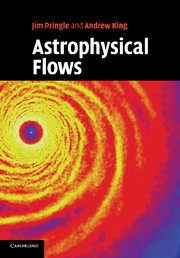Book contents
- Frontmatter
- Contents
- Preface
- 1 The basic fluid equations
- 2 Compressible media
- 3 Spherically symmetric flows
- 4 Stellar models and stellar oscillations
- 5 Stellar oscillations – waves in stratified media
- 6 Damping and excitation of stellar oscillations
- 7 Magnetic instability in a static atmosphere
- 8 Thermal instabilities
- 9 Gravitational instability
- 10 Linear shear flows
- 11 Rotating flows
- 12 Circular shear flow
- 13 Modes in rotating stars
- 14 Cylindrical shear flow-non-axisymmetric instability
- References
- Index
5 - Stellar oscillations – waves in stratified media
Published online by Cambridge University Press: 05 June 2012
- Frontmatter
- Contents
- Preface
- 1 The basic fluid equations
- 2 Compressible media
- 3 Spherically symmetric flows
- 4 Stellar models and stellar oscillations
- 5 Stellar oscillations – waves in stratified media
- 6 Damping and excitation of stellar oscillations
- 7 Magnetic instability in a static atmosphere
- 8 Thermal instabilities
- 9 Gravitational instability
- 10 Linear shear flows
- 11 Rotating flows
- 12 Circular shear flow
- 13 Modes in rotating stars
- 14 Cylindrical shear flow-non-axisymmetric instability
- References
- Index
Summary
In the previous chapter we showed that if a star is stable it oscillates about its equilibrium configuration when perturbed. To do this we looked at the global properties of the whole star. We showed that the star acts like an organ pipe in that it oscillates in a distinct set of modes with a distinct set of frequencies. But to investigate the details of the oscillation modes of the star, we need to look at the details of how the oscillations propagate through the star. In line with our philosophy expressed previously, we shall simplify matters by only considering flat ‘stars’, or equivalently we can think of the analysis as applying to a plane-parallel atmosphere, whose vertical thickness is small compared with the star's radius.
To understand the physics of the oscillations, we need to ask what the restoring forces are. That is, if we perturb the fluid, what tries to push it back to where it was? We have so far come across two types of restoring force in non-magnetic media, and we can expect both to operate in a star. They are pressure and buoyancy.
(i) Pressure. If we compress a fluid element, we increase its pressure, and this increase produces a restoring force. The resulting oscillations are sound waves, with local speed. Oscillation modes in which pressure is the main restoring force are called p-modes.
[…]
- Type
- Chapter
- Information
- Astrophysical Flows , pp. 78 - 89Publisher: Cambridge University PressPrint publication year: 2007

